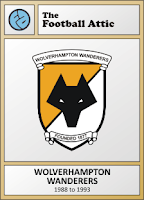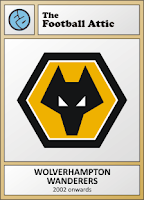If, as a child, you saw this slim tome in your local bookshop back in 1980, you might have expected it to contain articles about football and ITV’s presentation of it. Sadly for anyone interested in
The Big Match or On The Ball, this book featured only one such article, and at no point did it even mention Jim Rosenthal. Devastating as this is, I beg you to read on.
This was, in real terms, a football annual much like those produced by
Shoot or Match years ago, but it’s distinction derived from the fact that it was a one-off - published purely to coincide with ITV taking over the prime Saturday night highlights slot from the BBC.
The acquisition of those TV rights came to be known as ‘Snatch of the Day’ as it was the first time the BBC’s
Match of the Day had not been bumped from its traditional slot in the schedules. Having finally been given the go-ahead to switch from Sunday afternoons, The Big Match was finally where it wanted to be, and to celebrate, it produced... a children’s football annual.
They could have called it ‘The Big Match Annual’ (as a few other books had been in the mid-1970’s) but clearly the aim was to reinforce the word ‘Saturday’, as if ITV had finally laid their hands on the holy grail. Having emblazoned that on the front cover, they also included a nicely painted composition by Bill Ireland representing the home footballing nations. The ever-present image of Kevin Keegan took centre stage as you’d expect, while around him Kenny Dalglish, Terry Yorath, Peter Shilton and a couple of other less identifiable types were depicted doing their thing too.
This being the early-80’s, it was almost against the law to publish a football annual without
Kevin Keegan in it, and this one didn't disappoint. Inside we were told why Keegan chose to sign for Southampton on July 1, 1980 rather than the other clubs that were said to be after his signature, namely Barcelona, Juventus, Chelsea and Liverpool.
Aside from the chance to play at The Dell alongside his England teammate
Mick Channon, “private chats with Johan Cruyff convinced him Barcelona would expect too much from him for the fistful of pesetas he would get” or so we were led to believe. In addition, Italy was “torn by internal strife and terrified by kidnappings, bombings and murders in recent years” while Liverpool couldn't offer Keegan anything new by way of a challenge because he’d won everything there first time around.
As for Chelsea, they weren't guaranteed to get promotion from the Second Division in 1979/80 (they would ultimately miss out on goal difference) so in the following season “Keegan would have been appearing at Second Division clubs like Oldham, Cardiff, Bolton and Orient. Clearly a waste of the great man’s talent.” Ouch.
Talent was something very much on the mind of Denis Law, according to the annual. The former Man United and Man City star was pondering the dearth of skilful British players apparently seen more widely in in previous decades. The reason, Law surmised, was down to coaching. “Players like Bobby Charlton, George Best and Tom Finney never had any coaching” he said. “Look at their skills, their class and natural ability - it came through without any of the fanatical coaching people demand today.”
There was, it seemed, only one way to improve matters in the mind of The Law Man: “The sooner we throw out coaches, the better. The flair isn't there anymore and I am concerned it is because of the craving for coaches.” A curiously controversial view, and one that the average 15-year-old may have been at a loss to comprehend.
A happier man was Tony Woodcock. His move to Cologne had been all the more successful because of the determination to succeed shown by Kevin Keegan before him. ‘Keegan was virtually shunned by his Hamburg team-mates who even refused to pass to him during club matches’ said the annual. Woodcock continued: “Everyone knew the problems he was having and when he finally won through the following season, they really admired him for his determination.”
“Kevin’s battle at Hamburg certainly made life a lot easier for me, I realise that” he went on. “It will be the same for any more English players who come out here - they’re bound to find a more sensible and realistic attitude from the German players who can make or break such a move.” Tell that to Man City’s Dave Watson who, it was noted, went home to Southampton only a matter of weeks after
joining Werder Bremen.
Elsewhere in the annual, John Burridge explained why his rigorous fitness regime enabled him to keep in tip-top condition as he travelled around the UK looking for another club to join (sorry - might have made that last bit up) while Sunderland manager Ken Knighton stated why he was intent on keeping the Roker Park club in the top flight with nothing but success as his main priority. “If Sunderland hasn't made progress within three years, I don’t deserve to be in charge anymore” said Knighton. After a series of disputes with the club chairman, Knighton and his assistant Frank Clark left Sunderland Football club just a few months after the annual was published.
John Richards, meanwhile, was extolling the virtues of a growing partnership between himself and Andy Gray.
Wolves had won the League Cup in 1980 on the back of it and had finished sixth in the First Division. They’d even played in the UEFA Cup during September 1980, albeit going out after a home and away tie against PSV Eindhoven.
Richards said of record signing Gray: “He cost us a bomb but helped us win the League Cup and that was the first effect. Now we aim for the League Championship title.” When this annual was published, there were still five months of the 1980-81 season left to be played, but when it ended, Wolves were 18th in the First Division - just two places above the relegation zone. The following season saw them relegated to the Second Division, yet Gray and Richards remained at the club until it regained its place in the top flight in 1983.
ITV’s Saturday Soccer Special Annual certainly wasn't found wanting in its provision of articles, even providing a brief outline of Ipswich Town’s plan to become ‘Team of the Eighties’ and the role of smaller regional clubs like Brentford, Stockport and Tranmere to provide the talent for their bigger local rivals - but what about that one article on ITV itself?
Step forward Brian Moore to explain the fresh challenge of broadcasting a football show on Saturday nights instead of Sunday afternoons: “We had to gear our thinking much more to a totally hard news programme, plus plenty of action from three games” he said.
“Presenting three games on Saturday night was a new idea. The BBC had only shown two matches, plus some occasional film from another match. But covering three games fully meant a far wider spectrum” said Moore. “The BBC set a high standard for us to follow, make no mistake about that. But I feel they didn't go deeply enough into the stories arising from the Saturday matches.” Frank views indeed.
On an operational level, Brian Moore found his whole work routine transformed. “After commentating on a top match, he has his commitments to World of Sport, which involve a comprehensive after-match summary report. Then after lining up and doing the necessary interviews, it’s off from the ground at around 6pm... Brian likes to write his own scripts and then have something to eat. A change of clothes after that, and the clock is already ticking on to 8.30 or 9pm and it’s time for rehearsals.” After that, Moore could be seen presenting the live show on LWT after 10pm - a long day indeed for ITV’s main commentator.
In many ways, that level of commitment and professionalism shines through in this football annual. Everything’s well written and the presentation is neat and smart. Unfortunately one is left with the feeling that the book lacks a little soul - as if the book was conceived and produced by a committee of senior managers rather than football writers and designers.
Perhaps it’s just as well, then, that this was a one-off attempt by ITV to make a football annual. They didn't do a bad job, but to be as frank as Brian Moore himself, they were never going to match Shoot’s passion for football writing that kids loved for years long before and since.
![]() Last year's chosen one was this cracker from Wrong Side of the Pond.
Last year's chosen one was this cracker from Wrong Side of the Pond.![]() Whether we do this will depend on demand, so if you're interested, let us know and we'll get on it :) As with last year, we would probably create a standard version with the stickers pre-printed in the book along with your own entries in actual sticker form (including foil sticker!)
Whether we do this will depend on demand, so if you're interested, let us know and we'll get on it :) As with last year, we would probably create a standard version with the stickers pre-printed in the book along with your own entries in actual sticker form (including foil sticker!) Last year's chosen one was this cracker from Wrong Side of the Pond.
Last year's chosen one was this cracker from Wrong Side of the Pond. Whether we do this will depend on demand, so if you're interested, let us know and we'll get on it :) As with last year, we would probably create a standard version with the stickers pre-printed in the book along with your own entries in actual sticker form (including foil sticker!)
Whether we do this will depend on demand, so if you're interested, let us know and we'll get on it :) As with last year, we would probably create a standard version with the stickers pre-printed in the book along with your own entries in actual sticker form (including foil sticker!)













































